Crafting a compelling personal statement can feel like scaling Mount Everest. You’re tasked with distilling your essence, your experiences, and your aspirations into a concise narrative that captivates admissions officers. Over 70% of college admissions officers consider the personal statement a significant factor in their decision-making process, so doing well with your paper should be a priority. Feeling overwhelmed? You are not alone.
This expert guide will help you navigate the complexities of writing a personal statement that stands out from the crowd, highlighting your unique qualities and showcasing your potential.
What is a Personal Statement?
A personal statement is your chance to introduce yourself beyond grades and test scores. It’s a narrative essay where you reveal who you are, what drives you, and why you’re a good fit for a particular program or institution. It’s the human element in your application, the space where you connect with the reader on a personal level.
While a resume presents your accomplishments, a personal statement breathes life into them. It showcases your character, your thought process, and your ability to articulate your experiences in a meaningful way.
Why is a Personal Statement Important?
The personal statement is a critical component of your application because it:
- Showcases your personality: It allows admissions committees to get to know you beyond your academic record.
- Demonstrates your writing skills: It proves your ability to communicate effectively and persuasively.
- Explains your story: It gives you a chance to provide context for your grades, experiences, and career aspirations.
- Highlights your fit: It demonstrates why you are a good match for the specific program or institution.
- Differentiates you from other applicants: It helps you stand out in a competitive pool of candidates.
Without a strong personal statement, you risk being perceived as just another applicant with good grades. It’s your opportunity to shine, to show your passion, and to leave a lasting impression.
Before You Write: Key Considerations
Before you begin typing, take some time to reflect and plan. Rushing into the writing process without a clear understanding of your goals and experiences can lead to a generic and uninspired statement.
Understanding the Prompt
Read the prompt carefully. What are the specific questions being asked? What are the key themes or topics the admissions committee is interested in? Tailoring your personal statement to the specific requirements of each application is essential. Approximately 60% of applicants fail to adequately address the prompt, missing a chance to connect to the admissions committee.
Some prompts are broad, asking you to simply “describe yourself” or “discuss your goals.” Others are more specific, asking you to reflect on a particular experience or address a specific challenge. Whatever the prompt, make sure you understand it thoroughly before you begin writing.
Identifying Your Key Strengths and Experiences
What makes you unique? What experiences have shaped you? What are you most passionate about? Identifying your key strengths and experiences is crucial for crafting a compelling personal statement.
Think about:
- Academic achievements: Did you excel in a particular subject? Did you participate in research or independent study?
- Extracurricular activities: Were you involved in clubs, sports, or volunteer work? Did you hold leadership positions?
- Work experience: Did you have a part-time job or internship? What did you learn from it?
- Personal challenges: Did you overcome any significant obstacles or setbacks? How did you grow from the experience?
- Defining moments: What events or experiences have had a profound impact on you?
Don’t be afraid to think outside the box. The most compelling personal statements often come from unexpected places.
Brainstorming and Outlining
Once you have a good understanding of the prompt and your key strengths and experiences, it’s time to brainstorm and outline your personal statement.
Start by listing all your ideas, experiences, and insights related to the prompt. Don’t worry about organization or grammar at this stage. Just get everything down on paper (or on your computer screen).
Once you have a comprehensive list, start grouping your ideas into categories and identifying potential themes. Consider how your experiences relate to each other and how they demonstrate your strengths and aspirations.
Finally, create an outline for your personal statement. A typical outline might include:
- Introduction: Grab the reader’s attention and introduce your main theme or argument.
- Body paragraphs: Develop your theme with specific examples and anecdotes.
- Conclusion: Summarize your main points and leave the reader with a lasting impression.
Writing Your Personal Statement: A Step-by-Step Guide
With your planning complete, it’s time to put pen to paper (or fingers to keyboard) and start writing your personal statement.
Crafting a Compelling Introduction
Your introduction is your first (and perhaps only) chance to grab the reader’s attention. It should be engaging, thought-provoking, and relevant to your main theme.
Avoid clichés and generic statements. Instead, try one of these techniques:
- Start with a vivid anecdote: A short, engaging story that illustrates a key aspect of your personality or experience.
- Pose a thought-provoking question: A question that challenges the reader to think about your topic in a new way.
- Make a bold statement: A surprising or controversial statement that grabs the reader’s attention.
For example, don’t simply write, “I’ve always been interested in science.” Instead, try something like: “The smell of formaldehyde in the biology lab wasn’t repulsive; it was intoxicating, a promise of discoveries yet to be made.”
Developing Strong Body Paragraphs
Your body paragraphs should develop your main theme with specific examples and anecdotes. Each paragraph should focus on a single idea and provide evidence to support your claims.
Use the STAR method (Situation, Task, Action, Result) to structure your anecdotes:
- Situation: Briefly describe the context of your story.
- Task: Explain what you were trying to achieve.
- Action: Describe the specific steps you took.
- Result: Explain the outcome of your actions and what you learned.
Don’t just list your accomplishments. Instead, show how you made a difference, overcame a challenge, or learned from your experiences.
Writing a Memorable Conclusion
Your conclusion should summarize your main points and leave the reader with a lasting impression. It’s your final chance to reinforce your key strengths and aspirations.
Avoid simply restating your introduction. Instead, try one of these techniques:
- Connect your experiences to your future goals: Explain how your past experiences have prepared you for the challenges and opportunities ahead.
- Offer a final insight: A thought-provoking reflection on your experiences and what you have learned.
- End with a call to action: A statement expressing your enthusiasm for the program and your desire to contribute to the community.
For example, instead of ending with “I hope you will consider my application,” try something like: “I am eager to contribute my passion for social justice and my skills in community organizing to your program and to work alongside your faculty to create a more equitable world.”
Showing, Not Telling
One of the most common mistakes in personal statement writing is “telling” instead of “showing.” Instead of simply stating your qualities, demonstrate them through specific examples and anecdotes.
For example, don’t just say “I am a leader.” Instead, describe a time when you led a team, overcame a challenge, and achieved a specific result. Let the reader draw their own conclusions about your leadership abilities.
Maintaining Authenticity and Voice
Your personal statement should sound like you. Don’t try to imitate someone else’s writing style or use vocabulary you’re not comfortable with. Be honest, be genuine, and let your personality shine through.
Admissions committees can spot inauthenticity a mile away. They want to hear your story, in your own voice.
Refining Your Personal Statement: Editing and Proofreading
Once you have a draft of your personal statement, it’s time to refine it through careful editing and proofreading.
Reviewing for Clarity, Conciseness, and Grammar
Your personal statement should be clear, concise, and grammatically correct. Avoid jargon, clichés, and overly complex sentences. Use active voice and strong verbs.
Read your personal statement aloud to identify any awkward phrasing or grammatical errors. Use a grammar checker to catch any mistakes you may have missed.
Seeking Feedback from Trusted Sources
Ask trusted teachers, mentors, or friends to read your personal statement and provide feedback. They can help you identify areas where your writing is unclear, unconvincing, or ineffective.
Be open to criticism and willing to revise your personal statement based on the feedback you receive.
Eliminating Redundancy and Weakness
Every word in your personal statement should serve a purpose. Eliminate any redundant phrases, weak verbs, or unnecessary details.
Be ruthless in your editing. Cut anything that doesn’t add value to your story or support your main theme.
Ensuring the Final Product Aligns with Your Goals
Before submitting your personal statement, make sure it aligns with your goals and showcases your unique strengths and aspirations.
Ask yourself:
- Does my personal statement answer the prompt effectively?
- Does it showcase my personality and values?
- Does it demonstrate my writing skills?
- Does it highlight my fit for the program or institution?
- Does it leave a lasting impression on the reader?
If you can answer yes to all of these questions, you’re ready to submit your personal statement.
Common Mistakes to Avoid
Even with careful planning and writing, it’s easy to make mistakes in your personal statement. Here are some common pitfalls to avoid:
- Generic statements: Avoid clichés and generic statements that could apply to anyone.
- Lack of focus: Make sure your personal statement has a clear theme and purpose.
- Listing accomplishments: Don’t just list your accomplishments; show how you made a difference.
- Negative tone: Maintain a positive and optimistic tone throughout your personal statement.
- Grammar and spelling errors: Proofread carefully to avoid any mistakes.
- Exceeding word count: Stick to the specified word limit.
Examples of What Not to Do
Here are some examples of common mistakes in personal statement writing:
- “I am a hard worker and a team player.” (Generic statement)
- “I have always been interested in science, math, and technology.” (Lack of focus)
- “I got an A in biology and won the science fair.” (Listing accomplishments)
- “My life has been full of challenges, but I have always persevered.” (Negative tone)
- “I believe that I am the perfect candidate for your program because I am smart, talented, and dedicated.” (Arrogant tone)
Making Your Personal Statement Shine: Advanced Techniques
Once you’ve mastered the basics of personal statement writing, you can use some advanced techniques to make your statement truly shine.
Using Vivid Language and Imagery
Vivid language and imagery can bring your personal statement to life and make it more engaging for the reader. Use descriptive words and sensory details to create a memorable impression.
For example, instead of saying “I volunteered at a homeless shelter,” try something like: “The scent of stale coffee and disinfectant hung heavy in the air as I served breakfast to the weary faces at the homeless shelter, each a silent testament to hardship and resilience.”
Incorporating Humor (When Appropriate)
Humor can be a powerful tool for engaging the reader and showcasing your personality. However, use it sparingly and only when appropriate.
Avoid jokes that are offensive, insensitive, or irrelevant to your story. Make sure your humor is genuine and reflects your personality.
Creating a Sense of Mystery and Intrigue
Leaving the reader wanting more can be a great way to make your personal statement memorable. Create a sense of mystery and intrigue by hinting at a larger story or leaving some details unexplained.
For example, you might start with a cryptic statement or a puzzling image and then gradually reveal the meaning throughout your personal statement.
Connecting Your Personal Story to Broader Themes
Connecting your personal story to broader themes or social issues can make your personal statement more meaningful and impactful. Show how your experiences have shaped your understanding of the world and your desire to make a difference.
For example, you might connect your experiences with poverty to your passion for social justice or your experiences with illness to your desire to become a doctor.
Tailoring to the Institution
The most effective statements always address the institution. Showing that you understand the school’s mission and know what you’re getting into can go a long way. Many applicants will submit the same personal statement to multiple schools. Admissions committees can usually tell.
The Role of E-E-A-T in Your Personal Statement
While Google’s E-E-A-T (Experience, Expertise, Authoritativeness, and Trustworthiness) framework is primarily used to assess the quality of web content, the principles can be applied to your personal statement to enhance its credibility and impact.
- Experience: Showcase your first-hand experiences and provide authentic insights.
- Expertise: Demonstrate your knowledge and skills in your chosen field.
- Authoritativeness: Highlight your accomplishments and contributions.
- Trustworthiness: Be honest, genuine, and transparent in your writing.
By incorporating these elements into your personal statement, you can build trust with the reader and demonstrate your suitability for the program or institution.
Final Checklist Before Submission
Before hitting submit, take one last look at your personal statement and make sure it meets all the requirements.
- Did you answer the prompt effectively?
- Did you showcase your personality and values?
- Did you demonstrate your writing skills?
- Did you highlight your fit for the program or institution?
- Did you leave a lasting impression on the reader?
- Is your personal statement clear, concise, and grammatically correct?
- Did you seek feedback from trusted sources?
- Did you eliminate redundancy and weakness?
- Does your final product align with your goals?
- Have you adhered to the formatting guidelines?
Beyond the Application: The Value of Personal Reflection
The process of writing a personal statement is more than just a means to an end. It’s an opportunity for self-reflection and personal growth.
By taking the time to examine your experiences, identify your strengths, and articulate your aspirations, you can gain a deeper understanding of yourself and your place in the world. This self-awareness will serve you well, not only in your academic pursuits but also in your personal and professional life.
Is There Any Worth in Paying for Professional Personal Statement Editing Services?
The internet is full of services that promise to edit your personal statement. The worth of those services depends on what you need. Many schools will have campus resources that can help you for free. If you are looking for a more hands-on approach, then paying for help may be what you need. Here are some of the pros and cons:
Pros:
- Expert feedback: Professional editors have experience in reviewing personal statements and can offer valuable insights into your writing.
- Improved clarity: Editors can help identify areas where your writing is unclear or confusing and suggest ways to improve clarity.
- Enhanced grammar and style: Editors can help correct grammatical errors and improve the overall style of your personal statement.
- Objective perspective: Editors can offer an objective perspective on your personal statement, helping you identify any weaknesses or areas for improvement.
Cons:
- Cost: Professional editing services can be expensive, especially if you need multiple rounds of revisions.
- Loss of authenticity: If you rely too heavily on an editor, your personal statement may lose its authenticity and sound less like you.
- Risk of plagiarism: Be careful when choosing an editing service to avoid any risk of plagiarism. Make sure the editor understands the importance of originality and does not make any unauthorized changes to your writing.
- Time commitment: Working with an editor can take time, especially if you need multiple rounds of revisions.
Your Voice Matters
The best personal statement will always be the one that truly reflects who you are. It is not about crafting the perfect image or trying to be someone you’re not. It is about sharing your authentic self with the admissions committee and letting your unique qualities shine through. You can craft a compelling personal statement that opens doors to new opportunities and helps you achieve your dreams. The ability is within you.

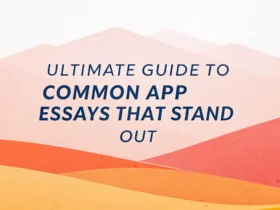
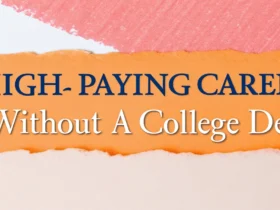

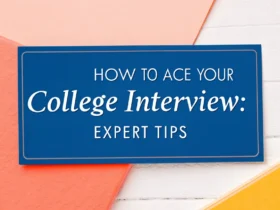
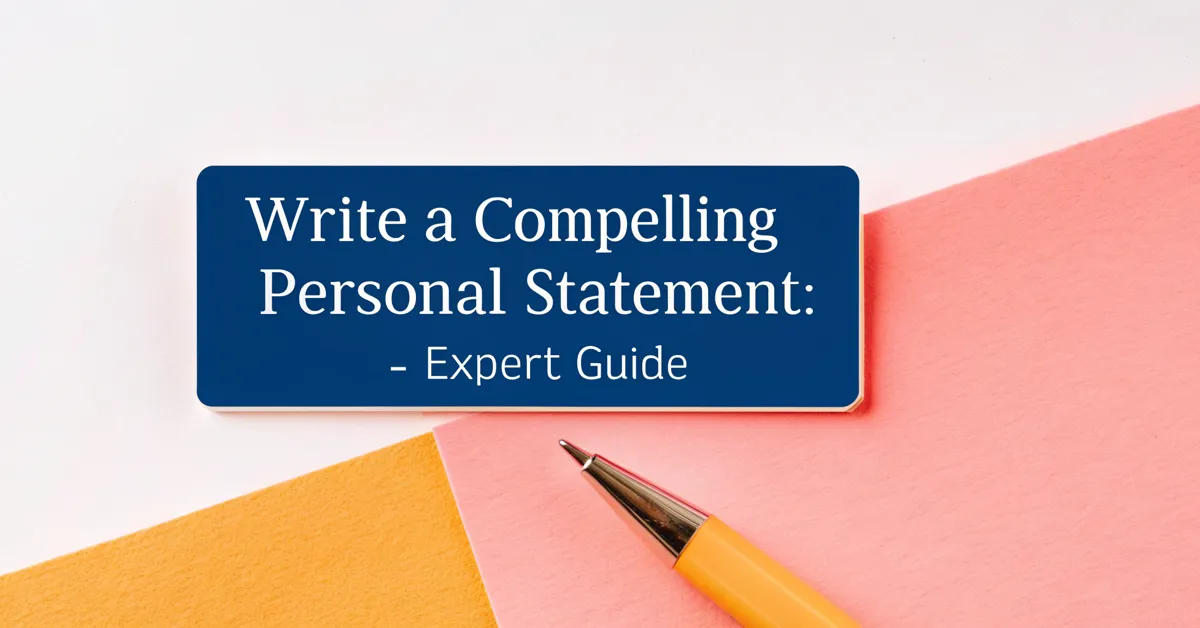
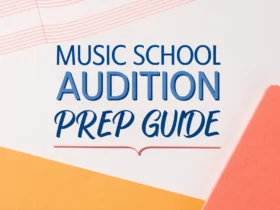

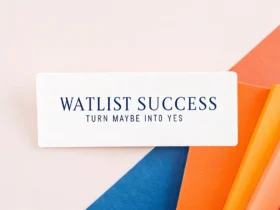




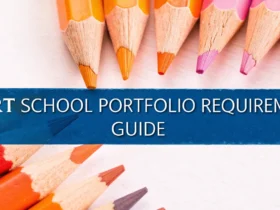
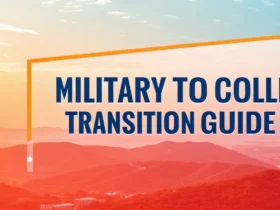
Leave a Reply
View Comments